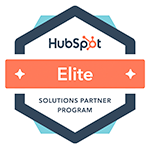Everyone knows the funnel. Marketing attracts leads, who are then qualified and handed off to sales. The sales team follows their process and closes as many customers as they can.
At the bottom of the funnel, what happens next?
Unfortunately, that’s where most companies make the mistake of leaving the customer as an afterthought.
That’s the inherent issue with most business methodologies: They don’t put the customer first in any of their practices.
A better way to think about your business structure is by looking at it as a flywheel.
What Is a Flywheel?
A flywheel is a piece of machinery that includes a mass rotating around an axis that stores kinetic energy. It operates by accelerating a rotor at high speeds, with the energy being maintained in the flywheel system as rotational energy.
This concept can also be applied as a business model.
In 2018, HubSpot introduced the concept of the flywheel model to address the fact that companies are stuck in the mindset of considering customers as an output of short-term efforts.
This is a limited belief. Customers are actually accelerants for your business in today’s world, and this model puts that to practice. The flywheel is focused on long-term, sustainable growth, which you can achieve through an excellent customer experience.
How the Flywheel Works
The success of your business is directly tied to a few key aspects of your flywheel:
- The speed
- The friction
- The size
You want strategies that impact all of these areas.
Applying force to your flywheel model translates to making changes to the biggest areas of impact for your business, like your content marketing strategy as well as referral marketing efforts. Your forces are the strategies you implement. The better your forces, the more speed you gain.
You can increase speed by reducing friction. Most businesses experience friction when their teams are siloed or at various areas in the customer journey where prospects fall off.
The more you increase speed through strategies and decrease friction throughout the customer lifecycle, the bigger your flywheel will grow.





